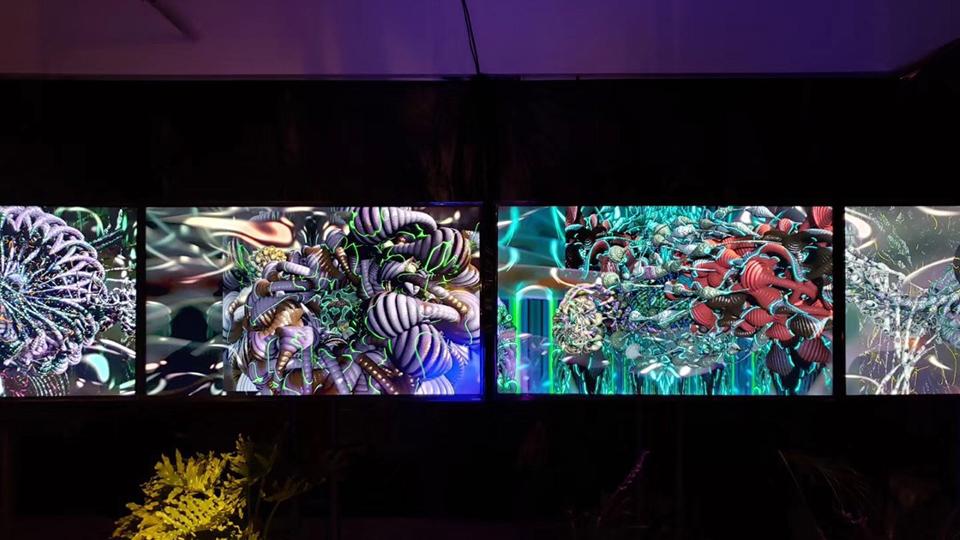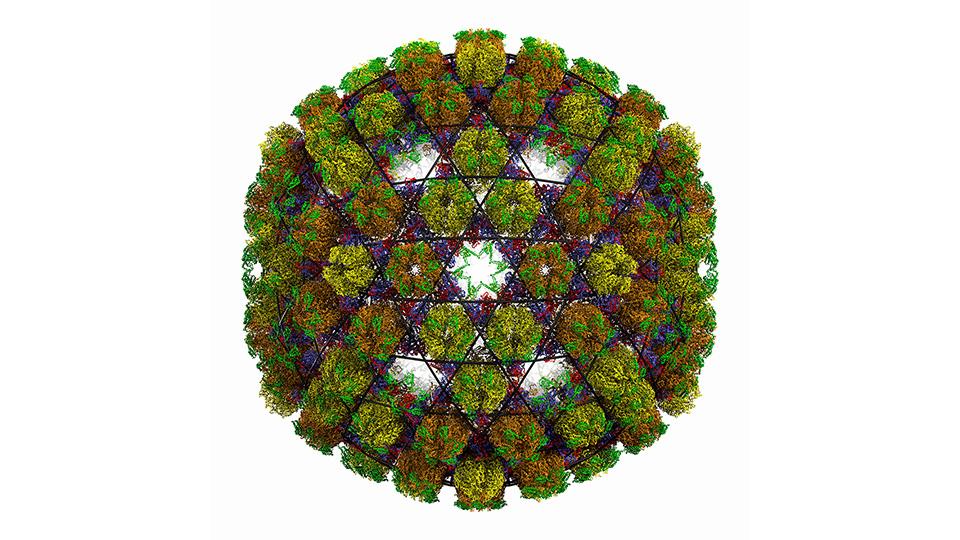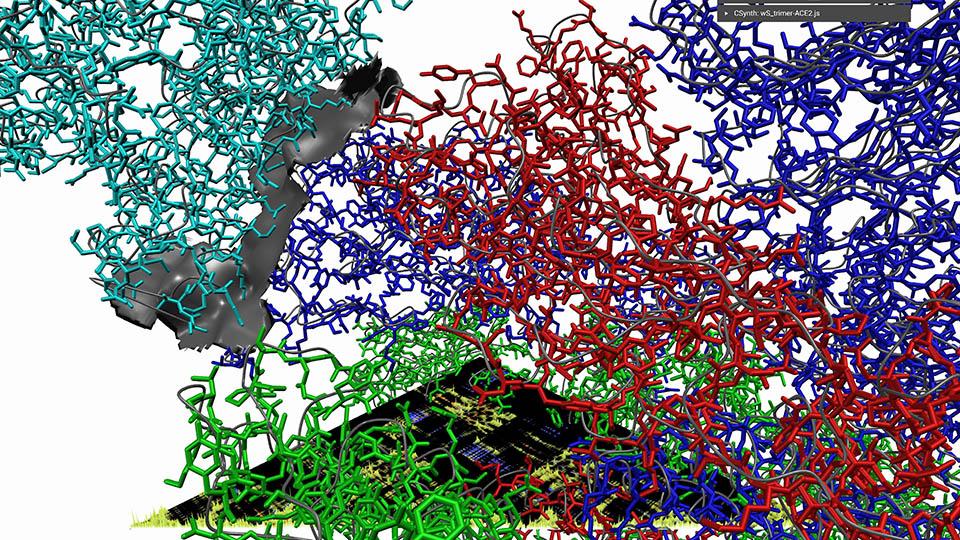Visualising Covid-19 with VR
Primary page content
A research group led by Goldsmiths, University of London computer games designers, engineers and artists is working to create an interactive virtual reality (VR) visualisation of Covid-19.

Mutator VR, on which the MVR CSynth Virus technology is based, exhibited at Shanghai Modern Art Museum, 2019
Computing Professors William Latham and Frederic Fol Leymarie have adapted their Mutator VR Art technology in collaboration with Visiting Professor Stephen Todd to create a new custom real-time 3D virus visualisation engine.
The new MVR CSynth Virus Explorer allows scientists and the public to better understand the underlying geometry and structure of the Covid-19 virus in VR.
MVR CSynth Virus has been developed over the last two years, in collaboration with Professor Reidun Twarock from the Departments of Biology and Mathematics at the University of York, and the Analysis, Visualisation and Informatics Group at the Oxford Weatherall Institute of Molecular Medicine (led by Steve Taylor).
Work focused initially on visualising the Herpes Simplex Virus, which was shown in 2019 as an interactive VR exhibit in the public exhibition The State of Us at The Lowry Museum in Salford Quays. Since February the team has turned its attention to Covid-19.
Using data from the protein data base, they can construct a complex virus in real time and display its basic molecular dynamics. Viewers can watch and explore the 3D models on a screen or use a VR headset to immerse themselves in the virus and perform visualisation experiments.
Goldsmiths team members include Lance Putnam and lecturer Peter Todd from the Department of Computing.

[MVR CSynth Virus Viewer displaying the Herpes Simplex Virus in VR]
The research group has signed up to the Government’s COVID-19 Outbreak Parliamentary Expert database – a network of researchers with expertise relevant to the disease or its impacts.
Mutator VR Art, on which the MVR CSynth Virus technology is based, was shown recently at The Pompidou Centre in Paris in February and March (www.mutatorvr.com).

[A new image from the MVR CSynth software showing the medial surface between a human cell (in light blue) and a Covid-19 virus spike at protein level, in VR]
Professors Leymarie and Latham are also co-leading a team developing an educational 2D game for children which explores how human cells become infected and encourages learning about vital health messages through game play.
CovidBlox is being developed in partnership with scientific lead Professor Mike Sternberg from Imperial College's Centre for Bioinformatics in the Deptartment of Life Sciences. It is based on the core game engine developed for BioBlox, an educational game on the theme of protein docking which was released in 2017 and was demonstrated at New Scientist Live that year.
The new game for PC, smartphones and tablets shows how the Covid-19 virus docks with human cells at a protein level. It provides budding young scientists with an innovative new way to understand the way Covil-19 proteins “dock” with human cells and, in a wider sense, how drug design works.
The fun-to-play game is designed for players aged 8 to 16. There will be different versions aimed at different age groups, and the game will include targeted advice on the need for social distancing and information about the science of Covid-19.